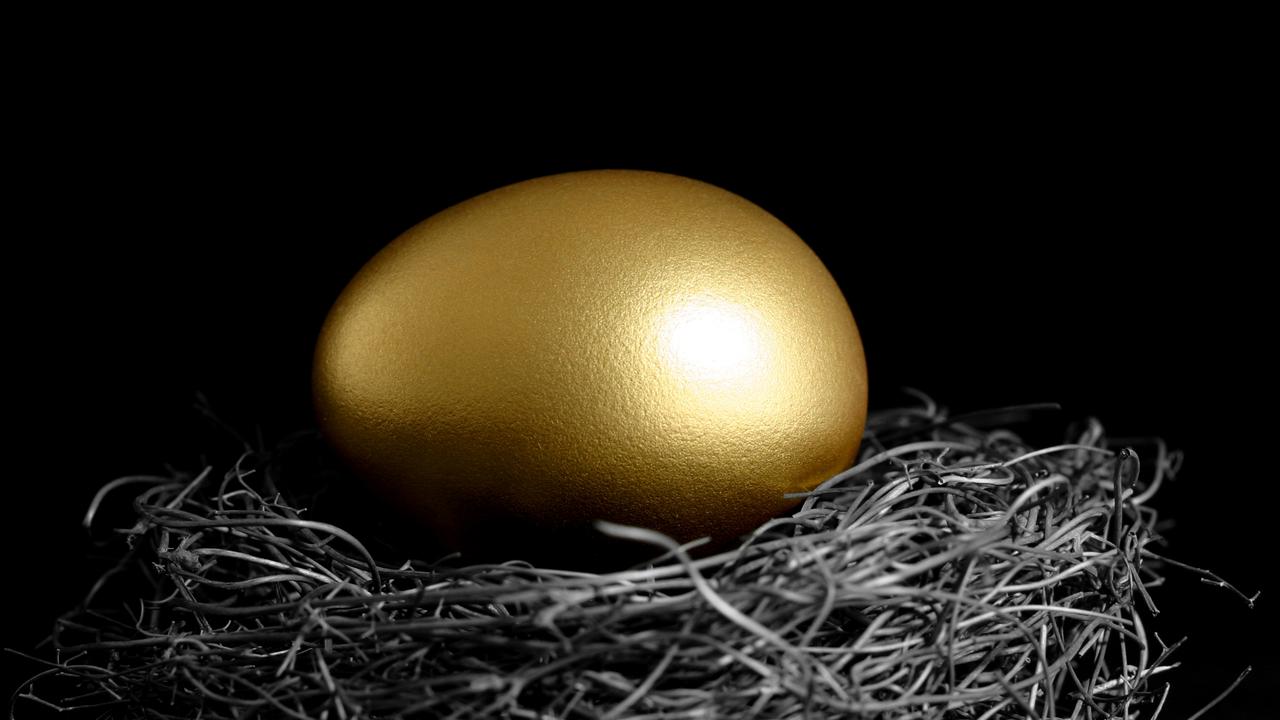Bruce Brammall’s tips for building your wealth in 2022
If you have made a New Year’s resolution to get your finances into shape in 2022, here are some tips to help you reach your goal.

Business
Don't miss out on the headlines from Business. Followed categories will be added to My News.
Some things older generations say make no sense at the time. Their aim might be “words from the wise”, but they come out like jibber jabber.
You file some of them in the memory bank. And occasionally, years later, you go: “No way! They were right!”
One from my Mum was “it’s not a holiday unless it’s at least three weeks”.
She reckoned it took two weeks to wind down from work. The third week is where your body could really relax. It didn’t make sense to me until my 30s.
That means for many Australians, during the coming week, your chill pill should kick in. And that’s when to start thinking good financial plans for the coming year.
I hope you didn’t do something silly like make a financial new year’s resolution a couple of nights ago, as you downed some bubbles … and probably went to bed before midnight.
Certainly not I. Haven’t for 30 years, since accepting I’d never kept one beyond the start of the Australian Open in mid-January.
But some point in January is the right time. And best to do it when you’re in the right frame of mind to make changes.
Change of mindset
Making big changes to your life – whether it’s weight, fitness, a new career or financial improvements – isn’t easy.
And you might be surprised at how much of it is “between the ears”.
It’s like the old lightbulb/psychologist joke: “How many psychologists does it take to change a lightbulb?”
Answer: “One. But the lightbulb has to want to change.”
Your goals might include learning how to save, to start investing, to expand your investment portfolio, to maximise your super or to buy a property.
But before that, a mindset change is required.

Why haven’t you been able to achieve the goal in the past? There are loads of books on the topic (and some are definitely worth a read), but let me summarise.
Deep down, it might be because you don’t feel you deserve a better life, you’re scared of some of the changes required or you’re worried that “success” might just bring other problems.
Whatever it is, changing those thought processes is paramount to making the progression from spender to saver, saver to investor, or investor to a successful investor.
It’s a tough change. But don’t give up on it. Accept that without reshaping your outlook on the world, making major financial promises to yourself will be much tougher to implement.
Assuming you’ve got some headspace to work on that while you’re hitting “peak chill” in the next week or so, where to next?
Super made splendid
“Seriously, Bruce? You’ve got super first up?”
Yes, I darn well do. And there’s a good reason for that. Many of the changes you can make to your super cost nothing, or save you tax, and can make tens of thousands of dollars (or maybe more if you’re young) difference to your future.
For all ages, the first question is “how is your super invested?” If you don’t know the answer, you have your first major problem. What are the chances it’s invested correctly for you?
Most of the details will be available online. If not, grab your last statement, or give your super fund a call.
Find out the breakdown of investments. That is, what percentages are in each of the four asset classes – shares, property, fixed interest and cash.
(Many super funds and investment companies will say that some of your money is invested in “alternatives”. But in the main, that’s overcomplicating things, as they can really be put into one of the other asset classes. Ignore them for now.)
Next, forage the internet for a risk profile (or two). Risk profiles are designed to help you determine how much risk you’re prepared to take with your investments.
With superannuation, understand that it’s generally going to be a very long-term investment. You can’t touch your super until you’re 65 (in some circumstances, 60) and even then it’s designed to be turned into an income stream to last you into your 80s or 90s.
Therefore, if you’re 30, your super is really a 50-60 year investment and your risk profile should reflect that you’re prepared to invest a little more aggressively.
Even if you’re 60, it’s designed to last you a few decades.
My point is, don’t be too conservative with the investments in your super. Err on the side of having more in the higher risk assets of shares and property, rather than less.
(And that’s also, partly, because cash and fixed interest aren’t going to be achieving much except safety for a year or two yet, with interest rates where they are).
Beefing it up
If you’re over 50, then the next big piece of the super puzzle is getting more into super.
You can put a maximum of $27,500 into super each year tax effectively. But this limit includes the 10 per cent Superannuation Guarantee your employer pays, plus any salary sacrifice or personal deductible contributions.
The closer you get to retirement, the sooner you’ll be able to get your hands back on the tax you’ve saved. Saving a few thousand dollars a year in tax from making extra contributions to super, in the last 5-10 years to retirement, is like picking up money lying on the ground.
That money will also be invested for you, so should earn even more as you make your way to retirement.

Young, higher earners
For those under 50, you should also consider putting a little extra into super, particularly if you’re young, already earning a higher income and are likely to earn a considerable wage later in your working life.
The main reason for this is that when you get into your 50s, you will want to get more into super, but might be limited because of how much you earn on how much extra you can contribute tax effectively.
Saver to investor
Let’s say you’ve mastered the savings thing.
Either you’ve always been a good saver, you’ve recently started earning good money and have been able to keep a grip on spending, or you’ve “seen the light” and have made changes to your spending so that you are saving.
It’s not enough. And this year, you’re determined to take the next step, from save to investor.
Again, start with a risk profile. But also take into account your timeframe. If this is short-term money, dial down your risk. If it’s longer-term, then you might want to take a slightly higher risk.
Yes, plans change. What was supposed to be medium-term sometimes becomes long-term and vice versa.
Wading in
Where do you start when it comes to investing? There are really only two options.
Educate yourself and take control. Or bring in a professional.

The first option is personally rewarding, but time consuming. You’ll need to do a lot more research on investment options and will need to monitor your investments. It keeps dollar costs down, but comes with a time cost.
For those with no time and/or interest in learning about investing because you’re busy managing a career, or raising kids, hiring a professional financial adviser might well be the only option you’d consider.
If left up to you to do the work, it simply wouldn’t get done. And that, of course, won’t help you achieve your goals. You know what’s required.
Preparing for take-off
New Year’s Eve is a terrible time to make resolutions. I hope you got together with friends and had a drink, to celebrate/commiserate the year that was.
But sometime in the week or two that’s coming, when you can feel the relaxation rolling over you, crack another drink and have a think about your 2022 financial priorities.
What is it? Why haven’t you been able to do it previously? And what’s the solution that will make it happen? Is it you making the commitment, or you making a phone call to someone who will help?
Bruce Brammall is both a financial adviser and mortgage broker and author of books including Debt Man Walking. E: bruce@brucebrammallfinancial.com.au.
Originally published as Bruce Brammall’s tips for building your wealth in 2022









